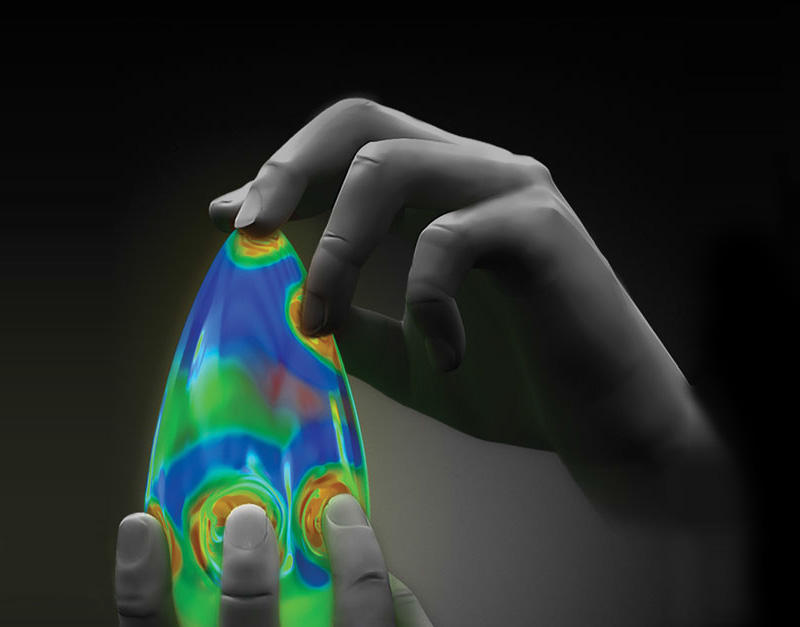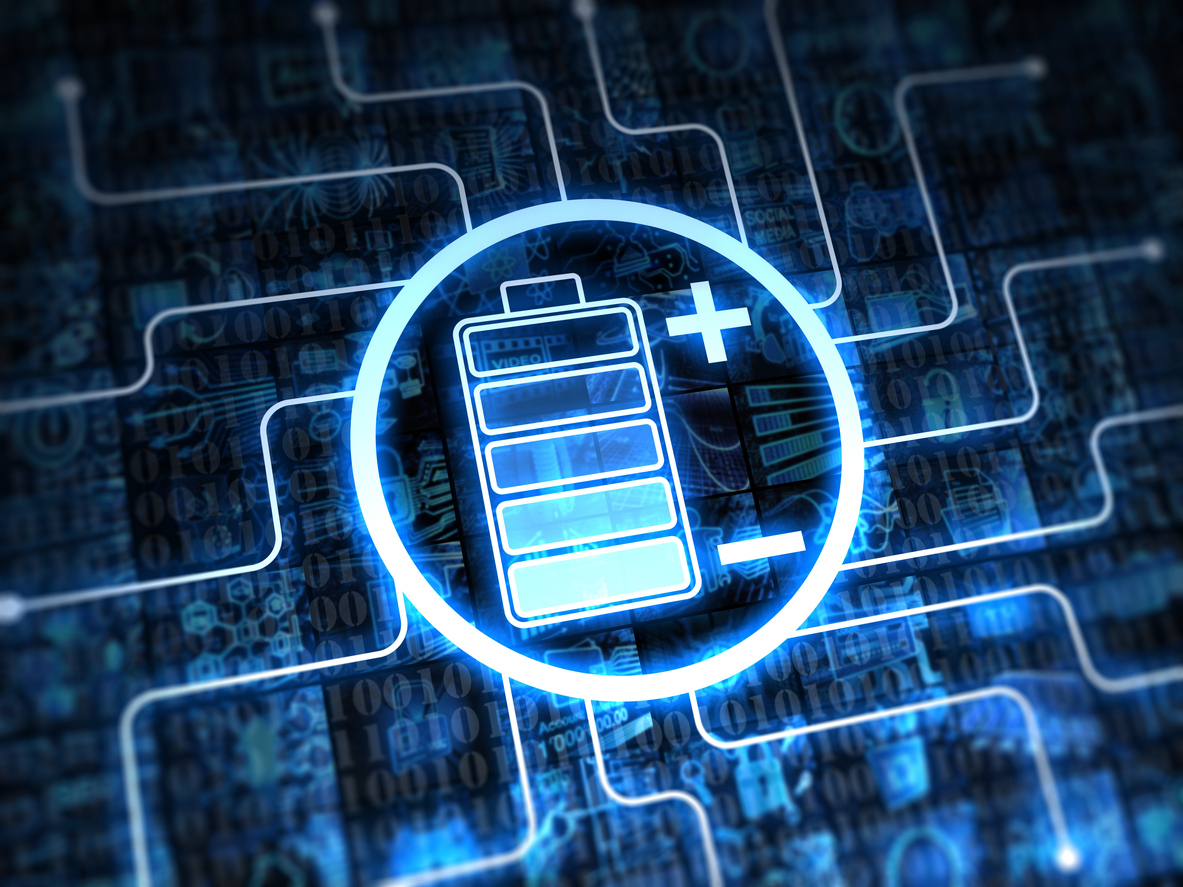The Pint Lab research effort combines a multidisciplinary team of the most talented and vision-driven researchers in the world to solve problems that require innovative solutions. Our goal is not to improve existing systems, but to create new systems forged through guiding rationale, relentless hard work, and creative scientific insight. Our efforts span across numerous fields, building upon the expertise of Prof. Pint and the team in areas of energy systems, carbon nanotechnology, and manufacturing. Below is a discussion of research areas that our team has led forward, as well as a discussion of ongoing broad interests of the Pint lab.
Area 1: Energy Storage Materials and Systems
 Our team has led key research thrusts in areas of lithium-sulfur batteries, sodium-sulfur batteries, sodium ion batteries, and potassium-ion batteries. Our work has demonstrated the first “anode-free” sodium battery with low-cost processing and the highest > 400 Wh/kg energy density ever reported for sodium batteries [1], a scalable manufacturing method for Li-S battery cathodes yielding record-level areal capacity and sulfur utilization – giving promise for energy density surpassing 500 Wh/kg [2-3], a sodium sulfur battery derived from bulk sugar, sulfur, and sodium that overcomes undesirable stability issues of other sodium-sulfur technologies while retaining cost benefits of the sodium-beta battery [4], and a sequence of studies representing the first of only a handful of contributions on potassium ion battery anodes [5-6].
Our team has led key research thrusts in areas of lithium-sulfur batteries, sodium-sulfur batteries, sodium ion batteries, and potassium-ion batteries. Our work has demonstrated the first “anode-free” sodium battery with low-cost processing and the highest > 400 Wh/kg energy density ever reported for sodium batteries [1], a scalable manufacturing method for Li-S battery cathodes yielding record-level areal capacity and sulfur utilization – giving promise for energy density surpassing 500 Wh/kg [2-3], a sodium sulfur battery derived from bulk sugar, sulfur, and sodium that overcomes undesirable stability issues of other sodium-sulfur technologies while retaining cost benefits of the sodium-beta battery [4], and a sequence of studies representing the first of only a handful of contributions on potassium ion battery anodes [5-6].
Ongoing Interests: We remain interested in pushing the energy density, durability, and cost to levels that can open new markets and overcome big limitations for existing battery systems. This requires understanding and exploitation of foundational mechanisms for these systems, and outside-the-box engineering design for devices. We are also developing a series of non-flammable electrolytes and developing top-down “smart” diagnostic tools that can be tailored to emerging battery systems.
[1] A.P. Cohn, N. Muralidharan, R. Carter, K. Share, and C.L. Pint, “An anode-free sodium battery through in-situ plating of sodium metal,” Nano Letters, 17, 1296-1301 (2017).
[2] M. Li, R. Carter, A. Douglas, L. Oakes, C.L. Pint, “Sulfur vapor-infiltrated 3-D carbon nanotube foam for binder-free high areal capacity composite lithium sulfur battery cathodes,” ACS Nano 11, 4877-4884 (2017).
[3] R. Carter, L. Oakes, N. Muralidharan, and C.L. Pint, “Isothermal sulfur condensation into carbon scaffolds: Improved loading, performance, and scalability for lithium sulfur battery cathodes,” Journal of Physical Chemistry C, 121, 7718-7727 (2017).
[4] R. Carter, L. Oakes, A. Douglas, N. Muralidharan, A.P. Cohn, and C.L. Pint, “A sugar derived room temperature sodium sulfur battery with long term cycling stability,” Nano Letters, 17, 1863-1869 (2017)
[5] K. Share, A.P. Cohn, R. Carter, B. Rodgers, and C.L. Pint, “Role of nitrogen doped graphene for improved high capacity potassium ion battery anodes,” ACS Nano 10, 9738-9744, (2016).
[6] K. Share, A.P. Cohn, R. Carter, and C.L. Pint, “Mechanism of Electrochemical Potassium Ion Intercalation Staging in Few Layered Graphene from In-Situ Raman Spectroscopy, Nanoscale 8, 16435-16439 (2016).
Area 2: Sustainable Conversion of CO2 into Carbon Nanomaterials
 Our team has pioneered the ability to produce valuable multi-walled carbon nanotubes from atmospheric carbon dioxide in a process that generates only O2 as a process byproduct. Early (collaborative) work demonstrated the first carbon nanotubes with excessively large diameters that remain of limited technological interest [1]. By exploiting the science of CNT growth from Prof. Pint’s over 10 years of experience in this area[2], further work has demonstrated > 99% yield of multi-walled CNTs with diameters near or below 30 nm [3]. This places our materials as being competitive in properties with CNTs grown using more expensive (and emissions-producing) processes and marketed at costs well exceeding $100/kg while incurring operating costs in laboratory experiments that remain under 50% of this amount [4]. Compared to research efforts aiming to study and use energy-intensive and low efficiency processes to produce fuels such as methanol or ethanol that will further be burned to produce carbon emissions, or efforts requiring energy consumption to absorb carbon dioxide into rock or stone with little to no value, our work stands out as the only approach that provides positive economic value when considering the material we’re producing from CO2 versus the total energy input required. Our focus toward producing high valued materials using a minimum energy footprint distinguishes our work from others and is the basis of our commercial efforts through our spin-off company SkyNano LLC.
Our team has pioneered the ability to produce valuable multi-walled carbon nanotubes from atmospheric carbon dioxide in a process that generates only O2 as a process byproduct. Early (collaborative) work demonstrated the first carbon nanotubes with excessively large diameters that remain of limited technological interest [1]. By exploiting the science of CNT growth from Prof. Pint’s over 10 years of experience in this area[2], further work has demonstrated > 99% yield of multi-walled CNTs with diameters near or below 30 nm [3]. This places our materials as being competitive in properties with CNTs grown using more expensive (and emissions-producing) processes and marketed at costs well exceeding $100/kg while incurring operating costs in laboratory experiments that remain under 50% of this amount [4]. Compared to research efforts aiming to study and use energy-intensive and low efficiency processes to produce fuels such as methanol or ethanol that will further be burned to produce carbon emissions, or efforts requiring energy consumption to absorb carbon dioxide into rock or stone with little to no value, our work stands out as the only approach that provides positive economic value when considering the material we’re producing from CO2 versus the total energy input required. Our focus toward producing high valued materials using a minimum energy footprint distinguishes our work from others and is the basis of our commercial efforts through our spin-off company SkyNano LLC.
Ongoing Interests: We are working to overcome the scientific limitations of synthesizing single-walled CNTs and single-layered graphene, the most atomically precise and valuable materials in the world, from atmospheric carbon dioxide. We are also exploring how electrochemistry tools can convert other greenhouse gases into carbon nanotubes, and how electrochemistry can be the golden bullet for a long-standing challenge of metallic carbon nanotube cloning, as originally envisioned by the late Prof. Richard Smalley.
[1] S. Licht, A. Douglas, J. Ren, R. Carter, M. Lefler, and C.L. Pint, “Carbon nanotubes produced from ambient carbon dioxide for environmentally sustainable lithium-ion and sodium-ion battery anodes,” ACS Central Science 2, 162-168 (2016).
[2] A. Douglas and C.L. Pint, “Review – Electrochemical growth of carbon nanotubes and graphene from ambient carbon dioxide: Synergy with conventional gas-phase growth mechanisms,” ECS Journal of Solid State Science and Technology, 6, M3084-M3089 (2017).
[3] A. Douglas, R. Carter, N. Muralidharan, L. Oakes, and C.L. Pint, “Iron catalyzed growth of crystalline multi-walled carbon nanotubes from ambient carbon dioxide mediated by molten carbonates,” Carbon, 116, 572-578 (2017).
[4] A. Douglas, N. Muralidharan, R. Carter, and C.L. Pint, “Sustainable Capture and Conversion of Carbon Dioxide into Valuable Multi-Walled Carbon Nanotubes using Metal Scrap Materials,” ACS Sustainable Chemistry & Engineering, accepted (2017).
Area 3: Mechano-Chemistry of Energy Materials

Prof. Pint’s team has led the first works aiming to understand how mechanical stresses can impact the electrochemistry of battery materials.[1-3] As semiconductor manufacturing has utilized strain engineering as a tool for the last two decades to maintain synergy with Moore’s law, battery researchers have focused efforts on studying strain only as an outcome or result of an electrochemical process. Our efforts break this mold and demonstrate how strains or stresses can be inputs to control electrochemistry in batteries, with far-reaching implications to battery manufacturing where strain often remains an uncontrolled parameter in battery material packaging and design. This has been the foundation for ongoing efforts in the development of strain energy harvesters that exploit the fundamental mechano-chemical coupling of battery materials for low-frequency human motion harvesting systems [4].
Ongoing Interests: We are working to broadly understand the impact of mechano-electrochemistry in technologically important areas such as corrosion, dealloying, and material processing. We are also working toward bringing together fabric design, biomechanics, and mechanochemistry platforms for smart and wearable fabrics that can track or harvest energy from motions.
[1] L. Oakes, R. Carter, T. Hanken, A.P. Cohn, K. Share, B. Schmidt, and C.L. Pint, “Interface strain in vertically stacked two-dimensional heterostructured carbon-MoS2 nanosheets controls electrochemical reactivity,” Nature Communications 7, 11796 (2016).
[2] N. Muralidharan, R. Carter, L. Oakes, A.P. Cohn, and C.L. Pint, “Strain engineering to modify the electrochemistry of energy storage electrodes,” Scientific Reports 6, 27542 (2016).
[3] N. Muralidharan, C. Brock, A.P. Cohn, D. Schauben, R.E. Carter, L. Oakes, D.G. Walker, and C.L. Pint, “Tunable MechanoChemistry of Lithium Battery Electrodes,” ACS Nano 11, 6243-6251 (2017).
[4] N. Muralidharan, M. Li, R. Carter, N. Galioto, and C.L. Pint, “Ultralow Frequency Electrochemical – Mechanical Strain Energy Harvester using 2D Black Phosphorus Nanosheets,” ACS Energy Letters 2, 1797-1803 (2017).
Area 4: Multifunctional Energy Systems

The Pint lab has been focused on a vision that Prof. Pint has held for many years, which is that the next impactful wave of energy technology will be integrated into technological systems instead of externally situated. This has led the Pint team toward advancements in multifunctional and integrated energy storage and harvesting systems [1-2]. Pint’s team has been the first to focus on the enabling mechanisms of interfaces in multifunctional energy storage composites, building critical assessment routes for the simultaneous mechanical – electrochemical testing necessary for assessment of multifunctional energy storage[1]. Pint’s team has also led efforts on practical integration of energy harvesting and energy storage technologies building around silicon-based systems[3-4], and demonstrated silicon-based water desalination routes that can be seamlessly integrated with the silicon-based systems that can power them [5]. This overall effort in the Pint lab focuses on the integration of energy technology into structural materials, wearable materials, and materials with the capability of simultaneous energy storage and harvesting capability.
Ongoing Interests: We are aggressively working to develop reinforced structural composites building from mechanistic design of interfaces to allow on-board energy storage without significantly compromised composite mechanical performance. This overcomes current routes described in the literature that simply “layer” materials together into composites without consideration of critical interfaces known to limit traditional reinforced composites. We are also working both in our laboratory and collaboratively on the textile based integration of energy harvesting, energy storage, and wireless energy transfer technologies for what we envision as core technology in an era where energy and big data intersect.